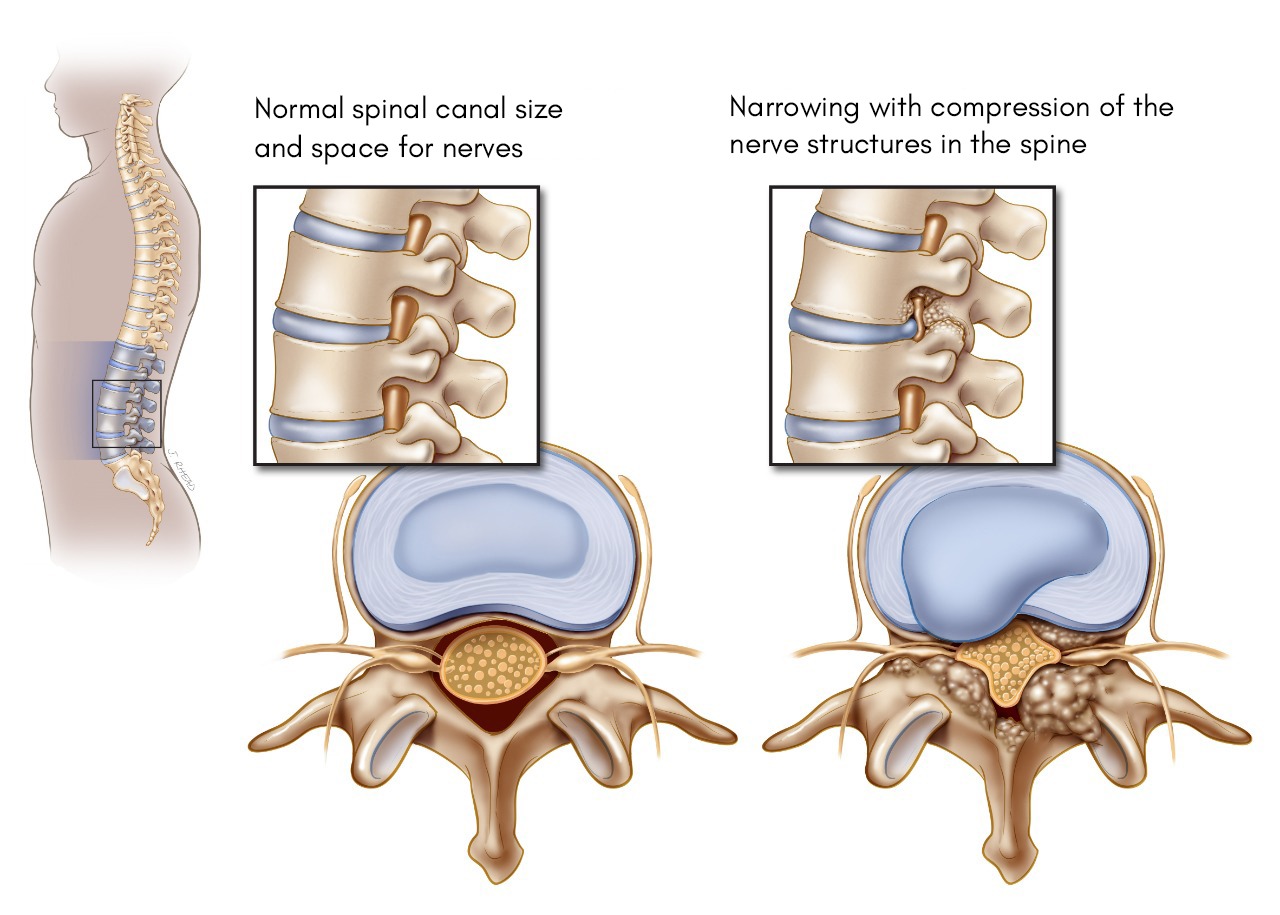Spinal Stenosis is an orthopedic condition in which the spinal cord is compressed due to narrowing of the space between the spinal column. It is a gradual process that might occur along the length of the spine.
Let’s get a brief about the spine and its functioning in the body. Your spine is a column of bones known as vertebrae providing support and stability to the upper body. It allows the functions like twist and turn. Spinal nerves are running through the spine openings; they receive signals from the brain and notifies the body. These spinal nerves are what forms the spinal cord.
Your spinal cord has bone and tissue wrapped around it for protection. Once impaired or damaged, it affects body functions such as balance, sensation, and walking.
Spinal stenosis is also called pseudo claudication, foraminal spinal stenosis or central spinal stenosis.
Types of spinal stenosis
The condition is categorized into two types based on the part of the spine affected, such as:
- Lumbar Stenosis: Spinal stenosis that involves narrowing of the spine in the lower back.
- Cervical Stenosis: Spinal stenosis involves narrowing of the spine in the neck region.
Symptoms of spinal stenosis
The symptoms of spinal stenosis are mild at first and gradually worsens. Here are the leading symptoms of both types – lumbar and cervical stenosis.
Lumbar Spinal Stenosis:
- Severe pain in the lower back
- Cramping in legs
- Sciatica (pain starting from the buttocks and reaching your foot down the leg)
- Weakness in the foot or leg
- Tingling or numbness in the leg, buttocks, or foot
- Severe pain when standing or walking (downhill) for long hours.
- Pain that reduces when bending forward, leaning, sitting, or walking uphill
- Loss of bowel or bladder control
Cervical Spinal Stenosis:
- Severe neck pain
- Tingling or numbness in the hands, arm, leg, or foot
- Difficulty in balancing
- Loss of bowel or bladder control
- Having problems while buttoning shirts or writing
- Clumsiness in the hand, foot, leg, or arm
Causes of Spinal Stenosis
The main cause of this orthopedic condition is ageing. As you grow older, the spine tissues begin to thicken, bones getting larger, ultimately compressing the spinal nerves.
Some specific health conditions are reportedly common causes of spinal stenosis, which include:
- Osteoarthritis
- Congenital spinal stenosis
- Ankylosing spondylitis
- Achondroplasia
- OPLL (Ossification of the posterior longitudinal ligament)
- Rheumatoid Arthritis
- Paget’s disease of the bone
- Spinal tumors
- Scoliosis
- Spinal injuries
Diagnosis of spinal stenosis
The doctor will begin with getting the details of your medical history, record the persisting symptoms and carry out a physical examination.
Some tests to investigate the symptoms include:
- Electromyogram (for checking the spinal nerves’ health)
- MRI scan, CT Scan, X-ray (for clear imaging of your spine)
- Bone scan (for detecting any growths or damage in your spine)

Treatment options for spinal stenosis
The initial treatment option your orthopedist will choose is medication. You may be prescribed cortisone injections to reduce swelling, and NSAIDs (Nonsteroidal anti-inflammatory drugs) to ease the pain. As every case of spinal stenosis is unique, doctors also recommend physical therapy to a few for stretching and strengthening the spine muscles.
If you are having severe symptoms of chronic pain or weakness, surgery is the most recommended treatment option. Your orthopedist may choose the best suitable option from the following types of surgery:
- Foraminotomy: Used to broaden the area of the spine from which the nerves exit
- Laminectomy: Used to remove a portion of the vertebrae to create space for the nerves
- Spinal fusion: Performed in severe cases where multiple levels of the spine are affected. The surgery involves metal implants or bone grafts to connect the affected bones of your spine.
In case you notice any of the above-mentioned symptoms, you must visit an orthopedist at the earliest.
